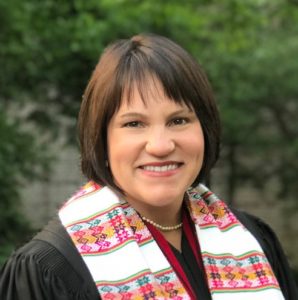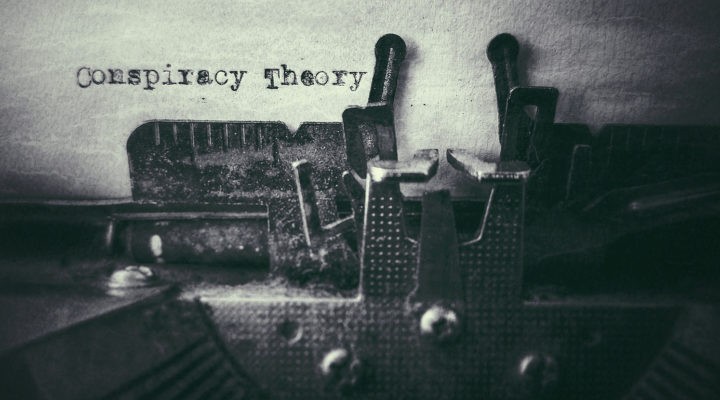It was two separate conversations with two thirty-somethings from two different states within two days: “My parents have become radicalized during COVID,” they lamented. The common theme in both discussions was that their senior adult parents had spent months in quarantine hypnotized by their favorite 24-hour opinion channel while getting drunk on internet-born conspiracy theories.
The result was that once-friendly phone calls with mom and/or dad became crazed diatribes. Social media posts transitioned from pictures of the grandkids to the latest inflammatory meme circling the internet.

Rhonda Abbott Blevins
“What can I do?” these adult kids wondered.
Reflecting on their question, I took it a step further. What can I do? What can we do? What is the role of the church in this Age of Conspiracy Theories?
Let us begin by recognizing that conspiracy theories are born in an environment where people feel powerless. When the world no longer makes sense, connecting disparate dots in the form of conspiracy theories may feel empowering, as if one has special “insider” information. Given this, we can see why the COVID quarantine has been a conspiracy theory breeding ground as scared, powerless people grasp at something, anything, that makes sense. The internet fuels these dark curiosities with algorithms designed to suck people further into conspiracy theory rabbit holes.
Once we recognize the powerlessness experienced by those who promulgate conspiracy theories, church leaders can work to empower people by teaching them healthy, constructive tools for discerning truth. This falls within the church’s mission as we remember Jesus’ words from the Gospel of John: “You will know the truth, and the truth will set you free.” Good news, in the age of rampant conspiracy theories, may mean teaching people how to discern true news.
To find a method churches might use to teach people how to sniff out fact from fiction, it may prove helpful to consider a gift to Christendom from the Methodist tradition. The “Wesleyan Quadrilateral” is a method for discerning theological truth. The four tools in the four-legged stool of the Wesleyan Quadrilateral are reason, Scripture, experience and tradition.
“Church leaders can work to empower people by teaching them healthy, constructive tools for discerning truth.”
If those are effective tools for discerning theological truth, what are effective tools for discerning truth when it comes to current events? Is there a “quadrilateral” that can help us navigate these disorienting days?
Here are four tools for our current events “quadrilateral,” our “truth toolbox.” We can empower people in the pews by teaching them these methods for discerning whether what we read or hear is fact or fiction:
- Credibility. We must vet the author and the publisher. If we could not include this author or publisher in a master’s thesis, then we should not consider it a reliable source. What else has this author published? What is the author’s point of view? Be wary of unusual website or domain names.
- Quality. Watch out for articles with sensational language and for social media posts that begin with, “This is not a hoax!” Notice extraneous exclamation points, spelling errors and all caps. A quality news outlet will have an editor who will catch most errors and demand a certain level of excellence.
- Timeliness. We should always check the date on articles we read. Sometimes a piece that was once legitimate is recirculated as if it is current, misleading readers.
- Sourcing. We would do well to be mindful of where we find articles, whether from a reputable news site or from a social media feed. Notice who the author cites and determine if the original source can be found. Explore whether the information is available on other legitimate news sites.
Credibility. Quality. Timeliness. Sourcing. These are four weapons in our arsenals for combatting fake news and conspiracy theories. There is also a fifth, a bonus tool: There are several fact-checking websites that do the work for us, like PolitiFact.com, FactCheck.org, and Snopes.com.
Grounding this discussion in the biblical story, we can look at the story of Thomas, often called “Doubting Thomas.” He heard something wild, outlandish and difficult to believe when he heard that Jesus was spotted raised from the dead. He chose not to believe without due diligence — without a proper fact-check.
Thomas has been criticized throughout the ages for this, but I find Thomas noble and sincere. In these disorienting days, we would do well to be a little more like Thomas, demanding more evidence before we place our belief in wild stories, as compelling as they may be.
Church leaders are lucky to have the attention of parishioners one hour per week. In that one hour, we should give them tools for navigating their other 167 hours. Good news isn’t good if it isn’t true. In this age of conspiracy theories and fake news, church leaders can empower parishioners, giving them tools to be tenacious truth seekers. That’s good news.
Rhonda Abbott Blevins serves as senior pastor of Chapel by the Sea in Clearwater Beach, Fla., and an associate with Pinnacle Leadership Associates. She earned the doctor of ministry degree from Mercer University’s McAfee School of Theology and previously served as the coordinator of CBF Kentucky. She and her husband, Terry, live with their two sons in Palm Harbor, Fla.


